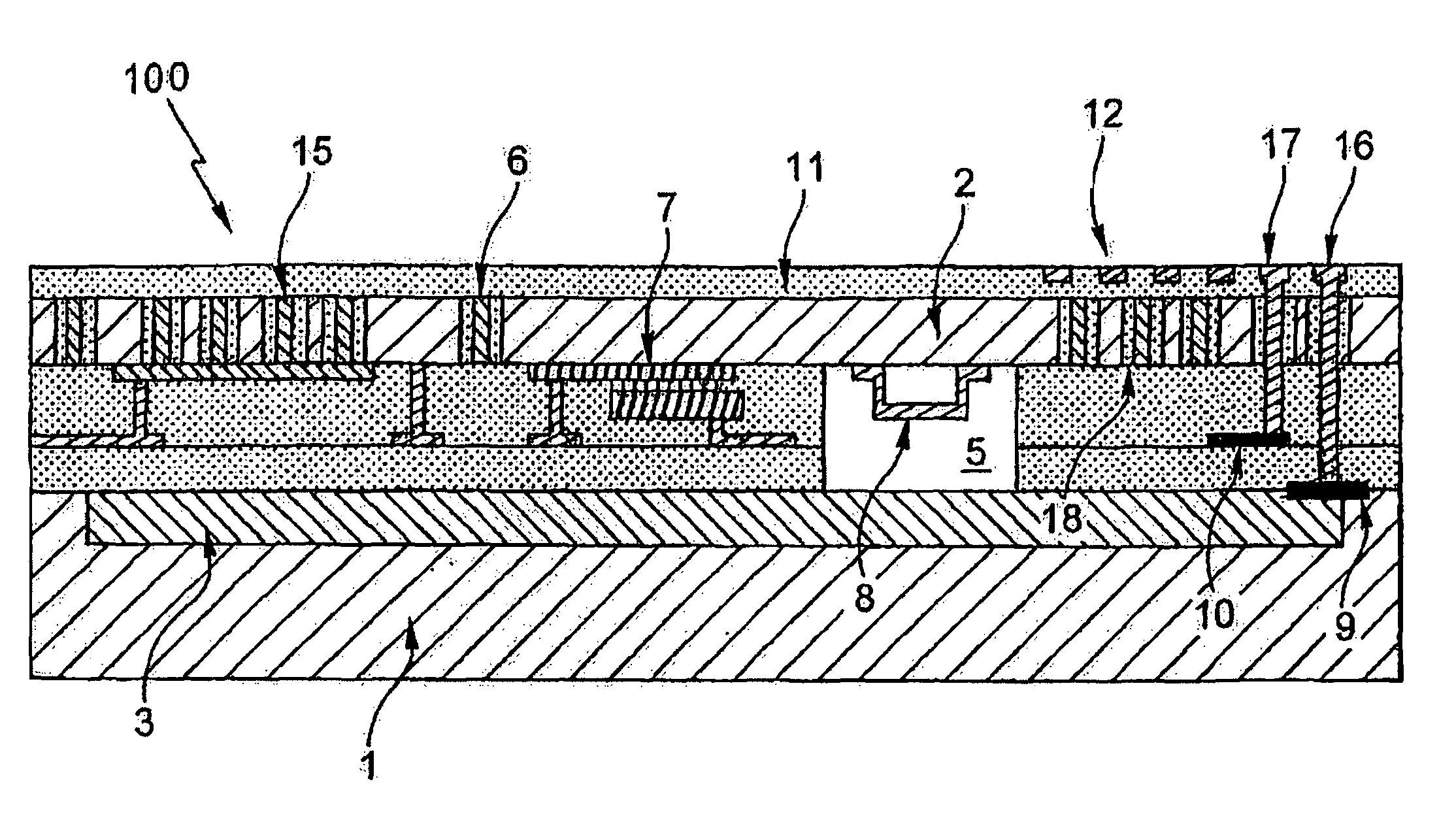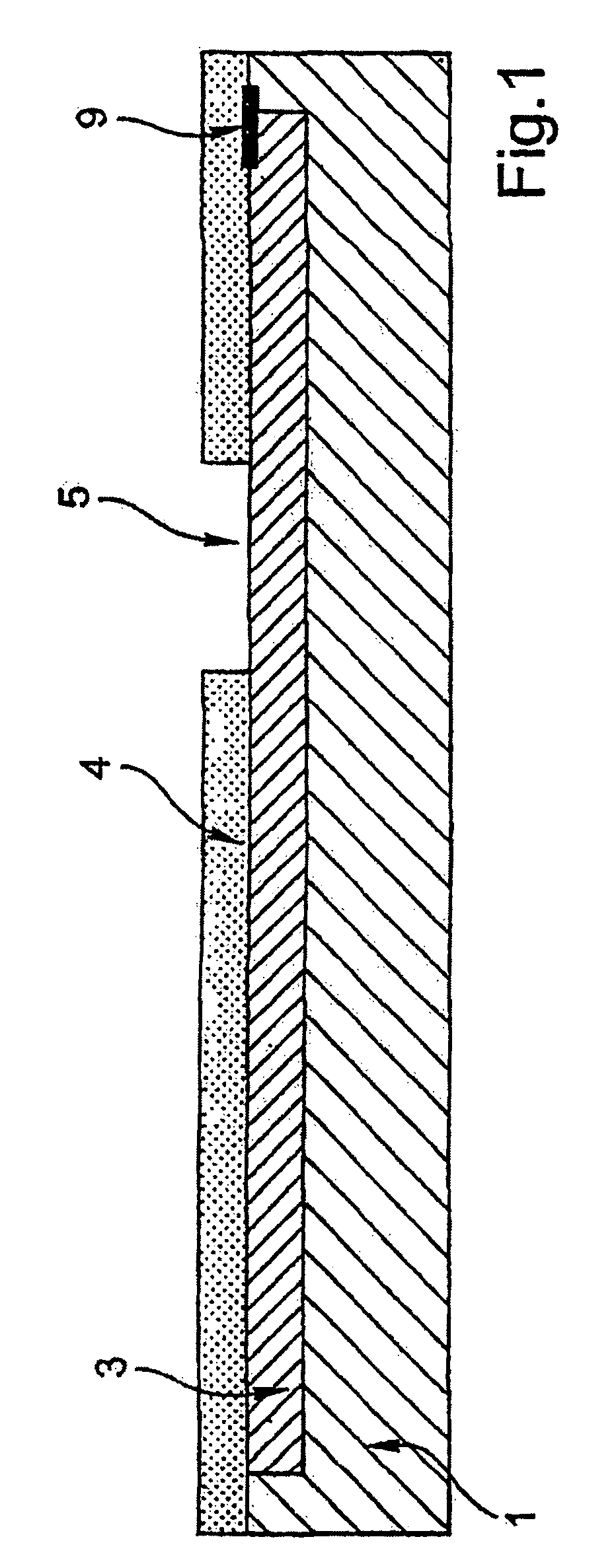Integrated circuit on high performance chip
a high-performance chip and integrated circuit technology, applied in the field of integrated circuits, can solve the problems of inability to easily meet the fabrication requirements of the active circuit, the nature of the layers and the treatment necessitated by the fabrication of the passive components, and the temperature is incompatible with the aluminum- or copper-based interconnection metal of the transistor, so as to reduce the effects of induced currents, reduce the effects of interference, and reduce the loss of induced currents
- Summary
- Abstract
- Description
- Claims
- Application Information
AI Technical Summary
Benefits of technology
Problems solved by technology
Method used
Image
Examples
Embodiment Construction
[0040]FIG. 1 shows a “first” substrate 1 consisting of a wafer of silicon or any other type III-V semiconductor material. The method of the invention begins with the preparation of two substrates 1 and 2 in either order or simultaneously. This first substrate 1 contains active components 3 that have been integrated by any technique known in the art (for example the CMOS or BICMOS technique) and metal interconnections (not shown).
[0041]In this embodiment, a thick layer 4 of insulation, for example SiO2, is deposited and, where appropriate, etched locally (forming cavities 5) in vertical alignment with any Microelectromechanical Systems (MEMS) components on the second substrate. Finally, metallization areas 9 are produced that are subsequently connected to other portions of the die (see below).
[0042]FIG. 2 represents a wafer forming a “second” substrate 2. In this embodiment, the second substrate 2 has been formed with: dielectric insulating trenches 6, capacitors 7 with a very high d...
PUM
 Login to View More
Login to View More Abstract
Description
Claims
Application Information
 Login to View More
Login to View More - R&D
- Intellectual Property
- Life Sciences
- Materials
- Tech Scout
- Unparalleled Data Quality
- Higher Quality Content
- 60% Fewer Hallucinations
Browse by: Latest US Patents, China's latest patents, Technical Efficacy Thesaurus, Application Domain, Technology Topic, Popular Technical Reports.
© 2025 PatSnap. All rights reserved.Legal|Privacy policy|Modern Slavery Act Transparency Statement|Sitemap|About US| Contact US: help@patsnap.com



